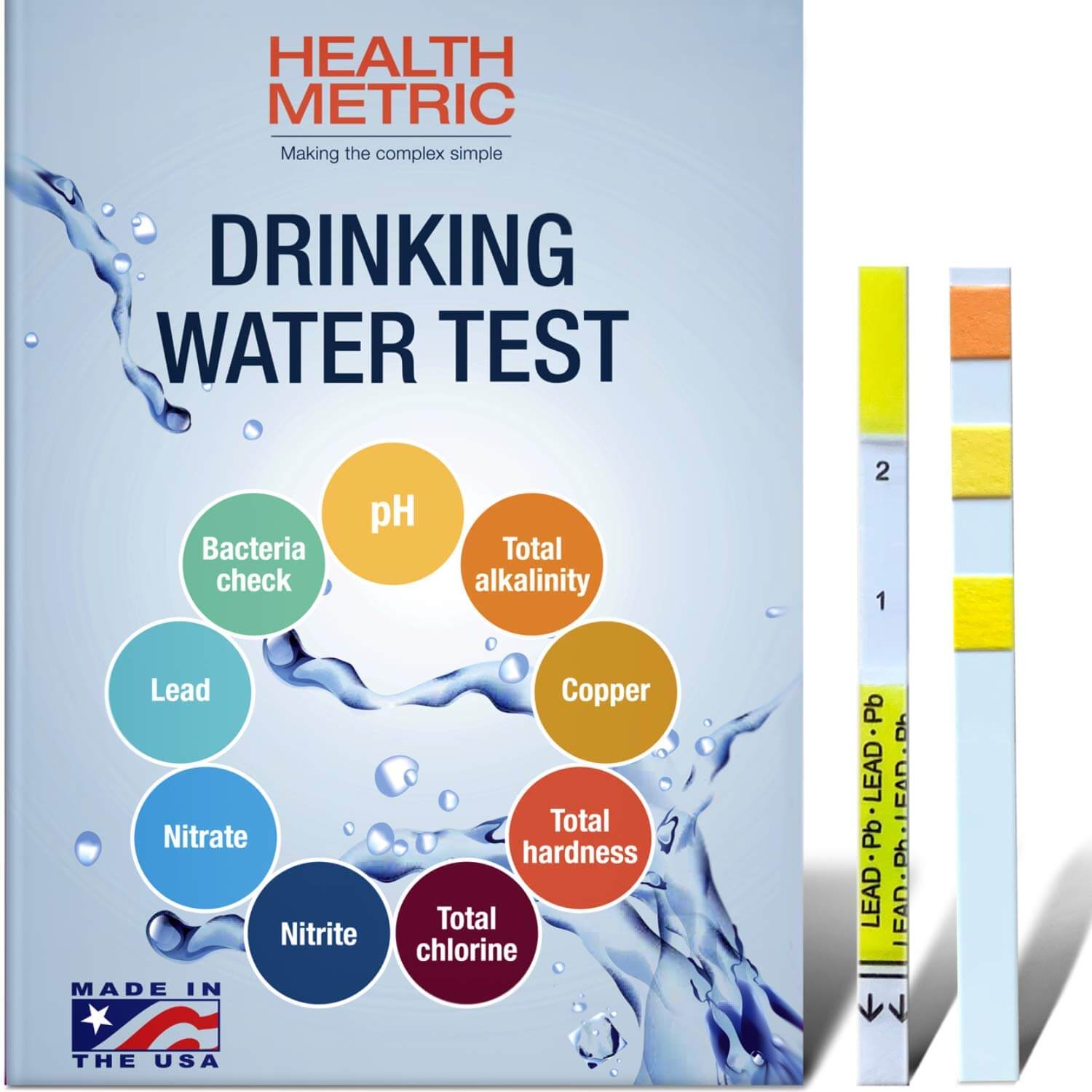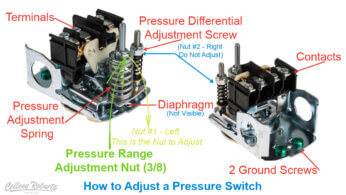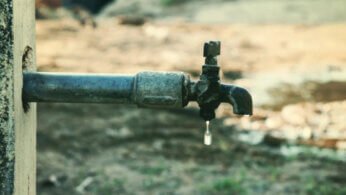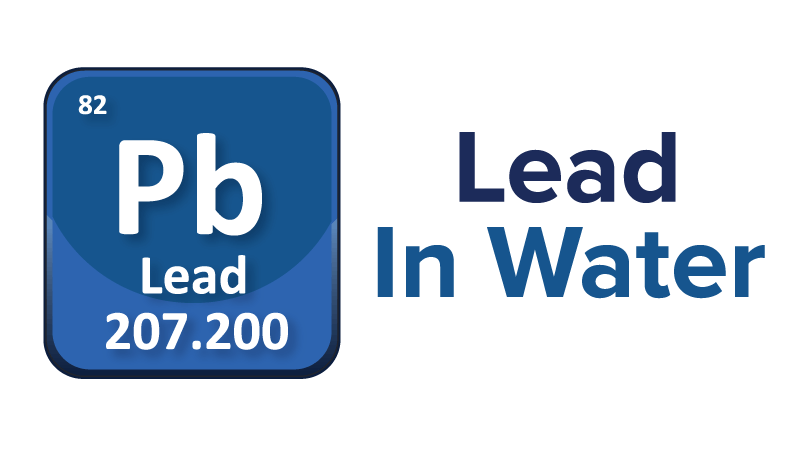
Understanding Lead in Drinking Water
Many people question lead in drinking water in British Columbia. Lead is found to occur in nature and as a result of human activities but in nature, lead is typically not found free in its pure form; it’s contained in ores with other metals — the most abundant one in the Earth’s crust being galena (PbS). Natural lead formations occur by the radioactive decay of uranium and thorium through radon (222Rn).
Four stable isotopes are known, 204Pb, 206Pb, 207Pb, and 208Pb, the first three of which are used to estimate the age of rocks. Lead compounds exist mainly in +2 or +4 oxidation states, the former being more common.
Read our complete guide explaining how to test lead in water
How Does Tap Water Become Contaminated with Lead?
As explained Lead (Pb) is naturally occurring in bedrock ore and from some human activities, but lead is not typically detected in source water as a result.
Really, the primary source of lead found in drinking water in British Columbia is lead that is leached into our drinking water from plumbing such as water mains, pipes, solder, water faucets, pipe fittings, and galvanized liners installed in older water wells and even old water well-pumping systems in British Columbia with water pumps installed and suspended on galvanized steel pipe with the old fittings and pitiless adapters that contain lead.
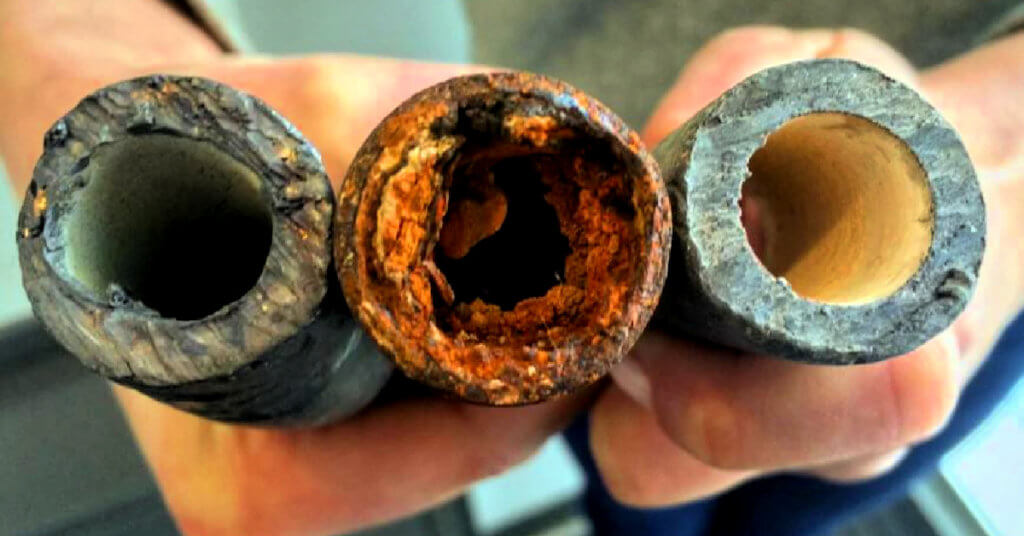
What Happens When Lead Gets into Water?
The amount of lead that will dissolve into drinking water will largely depend on the chemistry of the source water, such as pH, alkalinity, water temperature, water hardness, length of water pipe, and the amount of time that water is in contact with a contaminated material such as a water pipe.
Corrosive water is a naturally occurring water condition often called “aggressive water.” Aggressive water dissolves materials it comes into contact with and can become problematic, sometimes causing health-related issues. At its worst corrosive water can cause holes in water pipes to develop over time.
How can corrosive water possibly cause health-related problems? In water systems containing metal from pipes to fittings, aggressive water can break down metal, allowing copper, lead, or other metals to dissolve into water.
LEAD AND COPPER WATER TEST
Live in a home built before 1986 or an area served by old infrastructure?
Have young children or other vulnerable individuals in your home?
“ Lead and copper are often found in drinking water in older buildings. They can enter water from distribution lines or on-premise plumbing. Lab testing is important, because these metals become dangerous at levels far below what test strips detect. “
Corrosion from Plumbing Systems
Corrosion of lead from plumbing systems is more of a concern to the homeowner since it’s deemed a significant health hazard even in the smallest amount of lead. Lead-contaminated water will leave no visual indication and has no obvious taste or odor in drinking water.
Elevated copper in our bodies may cause stomach and intestinal discomforts such as nausea, vomiting, diarrhea, and stomach cramping.
However, lead is much more of a concern than copper; exposure to lead has been linked to health problems in children and adults.
Lead does accumulate and store in the body until it reaches toxic levels. It can be absorbed through the digestive tract and lungs and is carried by the blood throughout the body. The severity of the effects of lead poisoning varies and will depend on the concentration of lead in the body.
LEAD WATER TEST KIT
Lead Drinking Water Test Kit for Municipal Tap or Well Water – Simple Testing Strips for Lead Copper Bacteria, Nitrates, Chlorine and More. If you just want a simple water testing solution these kits are great.
Lead in Drinking Water
Canadian Drinking Water Guidelines
Health Canada Lead in Drinking Water Categories
1. Canadian Maximum Acceptable Concentrations MAC
Lead in Drinking Water in British Columbia – Canadian Maximum Acceptable Concentrations (MAC) 0.005 mg/L are based upon potential adverse health effects. However, water test results that exceed 0.005 mg/L do not necessarily indicate any immediate health problem. This is because, whenever possible MACs are developed to be low enough years of exposure at this level would only slightly increase the health risk.
However, if water test results exceed the MAC, corrective actions should be taken to remove any potential for increased health risk.
2. Aesthetic Objectives (AO)
Corrective actions are recommended if water test results exceed the AO but may not be necessary.
3. What is the Safe, Acceptable Lead Levels in Water in British Columbia?
Aesthetic Objectives (AO) are not based on health effects. Still, water test results that exceed these levels may indicate that the drinking water could have objectionable taste, odor, appearance, or other factors, including microbiological concerns such as viruses, bacteria, and protozoa.
Maximum Acceptable Concentration for Drinking Water in Canada = 0.005 mg/L according to the new reporting limit for lead for the Canadian Drinking Water Quality Guidelines update as of April 2019.
Lead in drinking water has no taste, smell, or color. It can only be detected through a chemical water test for lead.
The Guidelines for Canadian Drinking Water Quality set a (MAC) maximum acceptable concentration of 0.005 mg/L (5 parts per billion) for total lead in drinking water, measured at the tap. Every effort should be made to maintain acceptable lead levels in drinking water in British Columbia.
NOTE: To help understand these concentrations – One part per billion (ppb) is like one second in 32 years, or one penny in $10 million. So our example would be 5 ppb is like 5 pennies in $10 million.
Lead dissolved in water has no taste, smell, or color. It can only be detected through a chemical test.
Lead in drinking water in British Columbia can cause various adverse health problems. Lead exposure affects children, infants, and unborn children more adversely because their bodies absorb lead easier than adults.
A child’s brain and nervous system are known to be more sensitive to the effects of lead than older children and adults.
Child Exposure to Lead in BC – Health Effects May Include:
- Damage to the brain and nervous system
- Delays in physical and mental development
- Behavior and learning disabilities
- Hearing disorders
Health Effects for Adults Exposed to Lead that Exceeds the Canadian Drinking Water Guidelines May Include:
- Increased blood pressure
- Anemia
- Nerve disorders
- Muscle & joint pain
- Irritability
- Kidney damage
- Digestive problems
- Memory loss
- Fatigue
- Headaches
Exposure to lead in drinking water in British Columbia can affect the brain development of babies and young children. Lead exposure may cause other health problems with heart, kidney, and reproductive health in babies, children, and adults.
Young children (under six years of age) will have the highest risk for health effects because they’re still developing. A child absorbs lead easier and faster than adults.
Babies whose formula or other beverages are mixed with tap water are at risk of exposure to lead because the formula or juice typically contains 40% to 60% water. The water that older children and adults consume only contains maybe 10% to 20% of their intake because they ingest far more solids than an infant.
Important: Do not drink water from the hot water faucet or use a hot water tap to mix with baby formula because heated water can contain higher lead concentrations.
Pregnant women can pass lead to their unborn children. Lead can be present in breast milk, so it’s vital for breastfeeding mothers to reduce all lead exposure and should consume filtered water or bottled water.
If you’re pregnant or have children younger than six years old, see your doctor if your drinking water exceeds the Canadian MAC for lead in drinking water in British Columbia or if you have any concerns about lead exposure.
The lead risk to human health is only through ingesting lead, such as drinking, cooking, brushing teeth, etc. Lead levels in water > 0.005 mg/L are acceptable for showers, baths, handwashing, dishwashing, and general cleaning.

How to Test for Lead in Drinking Water
Testing your water regularly to ensure it meets the standard chemical parameters, including lead, can be important. Guidelines for Canadian Drinking Water Quality set out parameters of substances that may be found in drinking water.
The risk to human health is only through ingesting lead, such as drinking, cooking, brushing teeth, etc. Lead concentration in water exceeding > 0.005 mg/L is acceptable for showers, baths, handwashing, dishwashing, and general domestic purposes.
Read our complete guide to test lead in water
Lead Water Test Kits Make Testing Easy!
Water testing in British Columbia is not complicated; there are many accredited water testing labs throughout the province. Most water test kits for standard chemical parameters in BC will include water testing for lead. The Guidelines for Canadian Drinking Water Quality sets out parameters of substances that may be found in drinking water.
If you do not wish to do a comprehensive water test with an accredited lab, then a simple water test kit can be purchased for testing lead in your drinking water. Still, we have a FAQ for testing your drinking water for lead and other contaminants.
Lead Water Testing FAQ
FAQ: Where Should My Water be Tested for Lead?
Whether you are testing well water for lead or city water for lead, water test kits in British Columbia are available. An accredited provincial water testing laboratory should conduct testing. Accredited water testing laboratories serving the province will have water test kits for lead available.
If you choose not to use a water testing lab in BC, a simple lead water test kit is available with excellent reviews. The nice thing about having a water test kit is that you can test your water for lead often, and it’s cost-effective; I certainly think these kits are great when using them as indicators. But, if you have any reason to suspect that there is possibly lead in your drinking water, I would still recommend using a certified water testing lab… at least initially.
FAQ: Should I Test My Well Water for Lead?
If your water is drawn from a private water well in British Columbia, getting two water test kits for lead is advisable. The first water test lead kit sample should typically be drawn from the kitchen tap. If you choose to do a second sample, take a raw water sample from the water well before the water enters the home or building. Hopefully, this will help determine if there is lead in the well water, if it’s actually present in the groundwater, or if the plumbing pipe or fittings is responsible for the lead contamination.
FAQ: Should I Test My City Water for Lead?
- If testing the city water supply for lead one water test lead kit is required and should be collected before flushing the water (running the tap for at least two minutes)
- A second separate water sample for lead should be collected after flushing the water line.
FAQ: When Should a Water Sample for Lead be Taken?
Taking the first sample in the morning after the water has been in contact with the water pipe for an extended period may be more ideal than the second sample as described.
Carefully use the special water sampling bottles provided in the water test kit. Follow water testing instructions for lead to ensure proper water sampling procedures; not following proper water testing procedures for lead may cause the water analysis report to be false or fail for some water parameters.
FAQ: How to Purchase a Lead Water Test Kit?
Please visit for more information on water test kits for lead in drinking water anywhere in British Columbia. The cost of testing water for lead will vary depending on the scope and the number of parameters being tested; if you have not been testing your water regularly, you may want to get a
FAQ: What is the Best Way to Remove Lead from Drinking Water?
Once a water sample has been submitted to a British Columbia water testing lab and you’re waiting for the water test report results (typically emailed), you are concerned. You might want to consume an alternate water source for drinking, food washing, cooking, and teeth brushing until you get the results.
If elevated lead is detected >0.005 mg/L in your first lead water test, it’s imperative to identify the source of the lead.
Water lines containing lead were commonly installed in homes and drinking water systems in many countries, including Canada. Widespread installation of lead water pipes occurred in Canada until 1975, when lead was finally banned by revising the National Plumbing Code of Canada.
Additionally, solder containing lead was used for new plumbing and in repairs to plumbing until 1986. As a result, plumbing and distribution pipes and fittings can still be an important source of lead in the tap water of homes built before the 1990s. Many older homes and buildings in Canada may still contain lead materials.
Homeowners should also check the waterline that brings water into the home, sometimes located in the basement or crawlspace, close to the water meter. It could contain lead if it’s grey-black and scores easily when scraped with a sharp object.
If the source of lead in water is from the corrosion of lead-containing plumbing such as pipes & fittings etc., consider the following options:
- Remove the source of plumbing materials containing lead.
- Flush water faucets for at least 5 minutes or until the tap water runs as cold as possible before using the water for drinking, cooking, or teeth.
- Important to not use hot water from the tap for drinking, cooking, or mixing with baby formula.
- Adjust the pH of the water (typically, this is a point-of-entry water treatment system). Once the PH increased, the water will be less aggressive.
- Only install water treatment systems designed to meet your water chemistry requirements to reduce the lead in your water.
- Use an alternative water source, such as bottled or safe drinking water.
FAQ: Can Lead be Filtered Out of Water?
Lead in water cannot be reduced or removed from water by boiling. In fact, boiling lead-contaminated water might increase lead concentration.
If the groundwater source is found to be contaminated with lead before entering the home, flushing the faucet will not be effective. Consider the following water treatment systems to reduce lead levels effectively:
- Cation exchange
- Distillation
- Reverse osmosis
- Lead water treatment system with certification NSF Standard No. 53 for reduction of lead in drinking water
Purchase a water treatment system or water filtration system that has been certified to meet the current NSF standards (National Sanitation Foundation) for lead reduction in drinking water.
NSF International is an accredited, independent third-party certification body that tests and certifies products to verify they meet these public health and safety standards. Home water treatment systems that meet these standards bear the NSF mark. NSF International is a non-profit, non-governmental organization that sets health and safety standards for manufacturers in 80 countries worldwide.
Once a water treatment system or water filtration system for lead removal has been installed, re-test your water to ensure the water treatment system is performing effectively. On a more periodic but regular basis, water samples should be tested for lead to ensure the ongoing safety of your drinking water.
It’s crucial to maintain the lead removal water treatment system according to the instructions of your local water treatment expert to ensure a safe and long-term supply of drinking water.
For more information on the best water treatment system for lead-contaminated water, contact your local water treatment expert located in your community.
Water treatment systems should not be purchased online; they often require the expertise of a local professional with significant experience in the industry, such as design, installation, and service, when required.
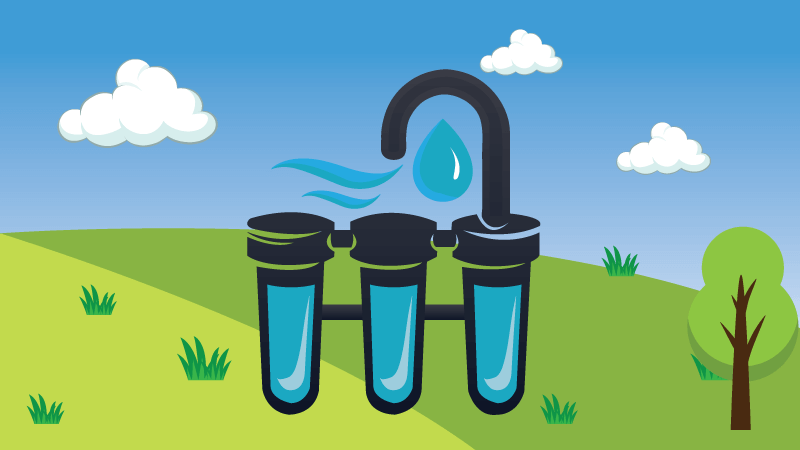
Water Softener for Lead Removal?
If the pH of lead-contaminated water is below 7, cation exchange will typically remove lead.
If the pH of the lead-contaminated water is above 7, the dissolved lead might be in a form that cannot be easily removed using a water softener or cation exchange. This may affect the efficiency of your water treatment system.

Get a monthly update of our most popular articles directly to your inbox such as Water Well Advice including Water Testing, Well Drilling... what you need to know when buying or selling Real Estate with Water Wells and Septic Systems & other rural living topics!


